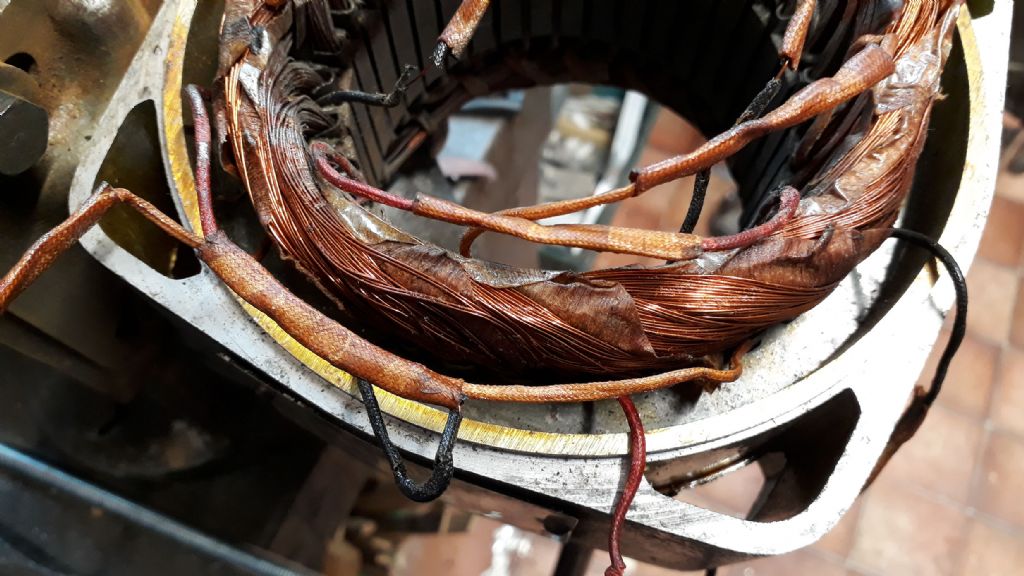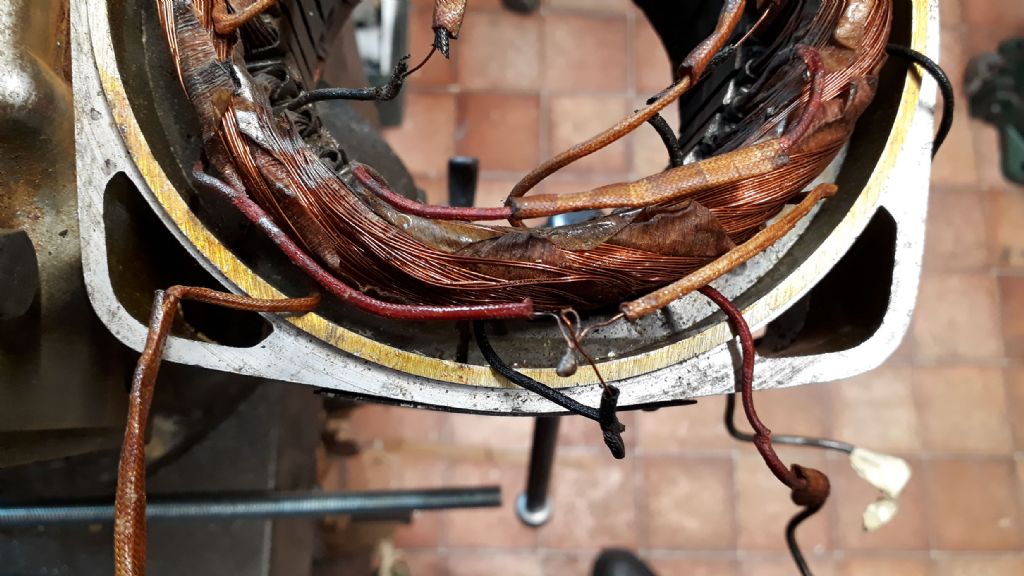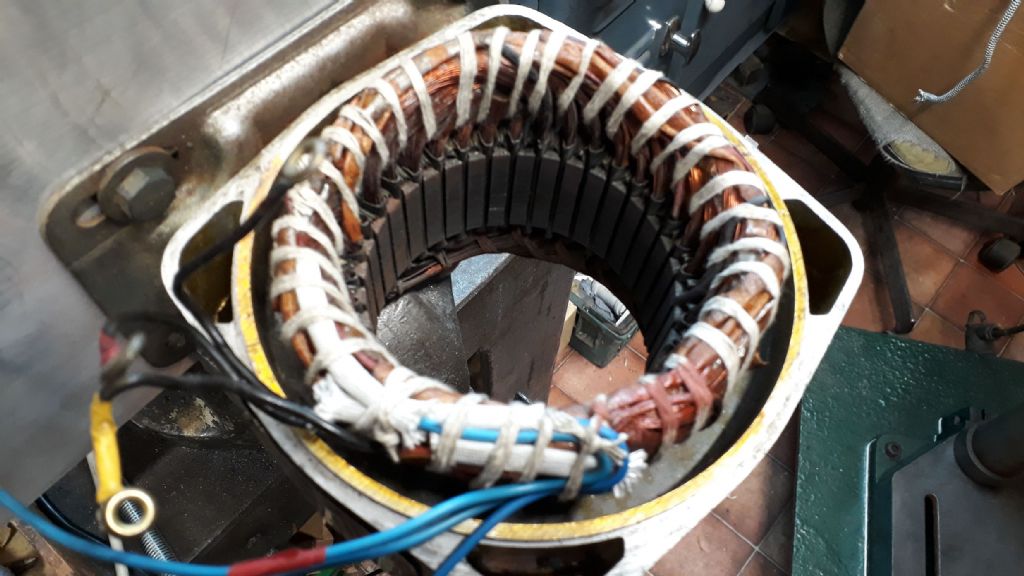Sticking to the theory and practice of electric motors, I wouldn't worry in this case about efficiency. Unless the motor spends a lot of time running, in practice the loss of efficiency won't add up to much. In my workshop the lights use far more electricity than the motors because the lights are always on, while the motors only run in short bursts. Efficiency becomes important when motors run continuously or for significant amounts of time. In a home workshop, a motor running at 60% rather than 80% efficiency might not show on the electricity bill at all.
My WM280 lathe is fitted with an 1100W out motor, 1½HP in old money. Not a massive machine – it's somewhat bigger than a Myford 7. 1100W is a measure of how much power the motor can deliver without overheating. The motor will deliver considerably more than 1100W if overloaded, but it won't be long before magic smoke and ruined insulation. In practice, putting a wattmeter on the lathe's input shows the motor isn't stressed at all. With the change-gears engaged, the lathe consumes just over 200W when idling. Normal cutting consumes markedly less than 1000W in. I've not managed to load the motor heavily enough to draw the full 1500W input. To load the motor to pull more than 1000W in, requires heavy cutting with carbide. Swarf comes off as a spray of smoking hot blue-steel chips; production rate cutting, not at all what I enjoy as an amateur.
Power is the rate at which the motor might do work if required. No harm done replacing a ¾HP motor 1HP provided the operator doesn't abuse the extra power and overstress the machine, perhaps by accident. Always possible to drop a big souped-up engine into an ordinary car, but the brakes, transmission, cooling system, and road-wheels also need attention. Might pay to fit a roll-bar as well! But 1HP instead of ¾HP isn't over the top. The uprated motor will do the same job as the small one 25% faster – if pushed.
I wouldn't uprate the motor from ¾HP to 1HP in hope of improving efficiency. Power ratings are just a hint because so much depends on the design and build of particular motors, and they vary a lot. Perfectly possible for a small motor to be more efficient than a big one. Safer to say a recent electric motor is probably more efficient than older ones because insulation is better and the design more optimised, but even that's a lottery.
In other words, I'd be happy with any motor than worked, and wouldn't fuss about efficiency unless the machine was doing production work. Instead, replace fluorescent tubes with LED lighting – that's well worth doing.
Dave
William Chitham.







